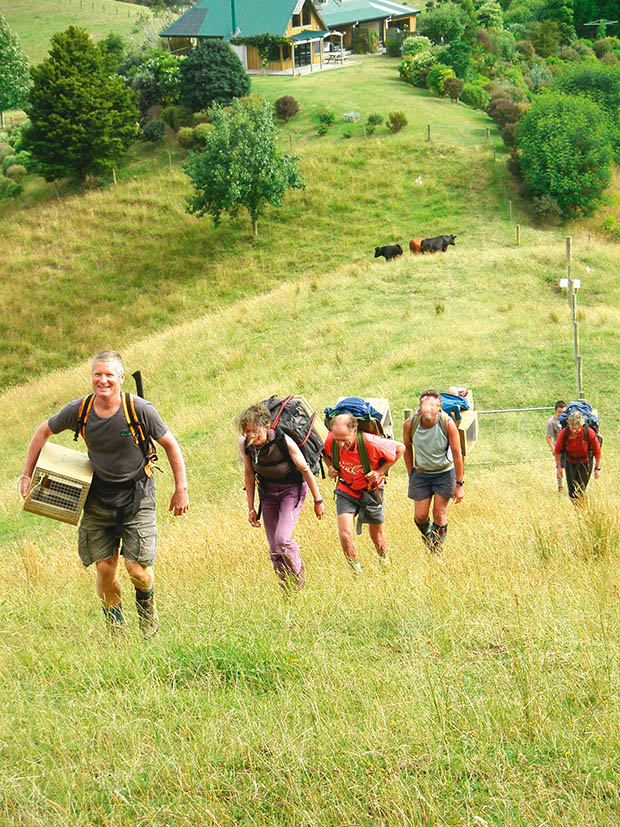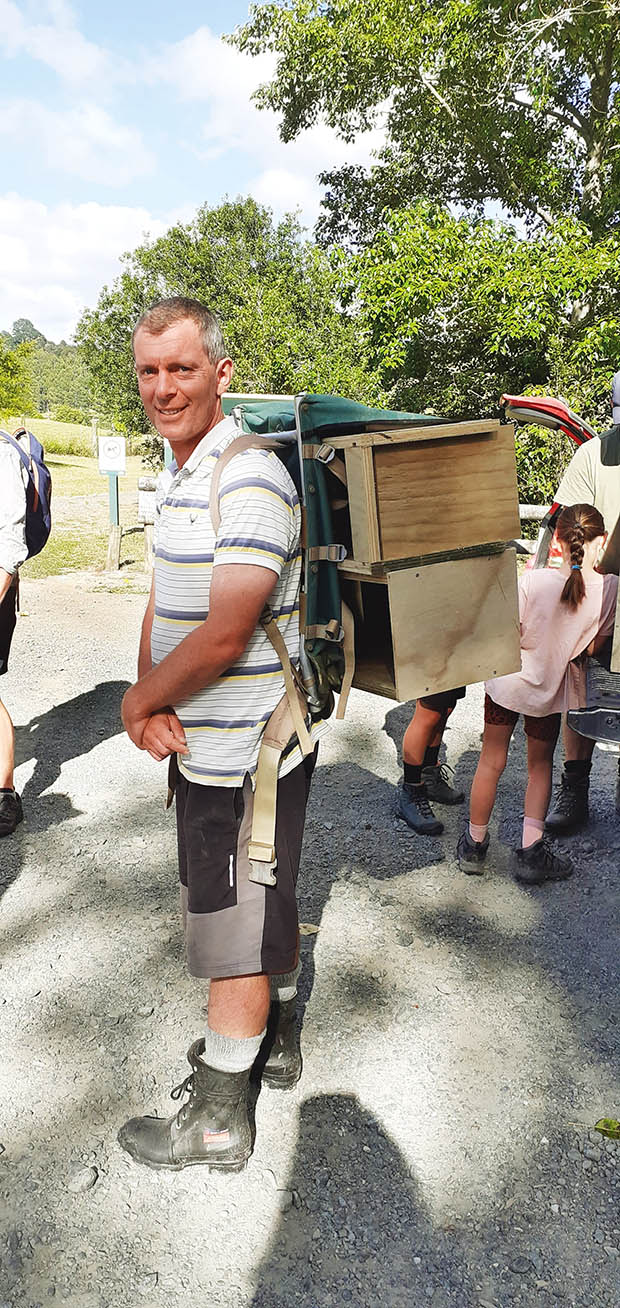Meet the volunteers protecting the Tamahunga Forest, one trapping circuit at a time

A community has rallied together to transform a corridor of forest north of Auckland.
Words: Nicole Barratt
Goats and stoats once ran rampant under Tamahunga Forest’s towering northern rātā and rimu. Thankfully, the calls of tūī, korimako and kākā are far more common today than the bleating of goats. The birdsong is a cheery testament to the dedication of the Tamahunga Trappers, a volunteer group dedicated to protecting native wildlife in the area.
The 230-hectare Tamahunga Forest forms part of a wide corridor of native bush set on steep sandstone hills. These hills stretch from Dome Forest, northwest of Warkworth, to Leigh on the east coast.
Tamahunga Trappers’ chair David Wilson says the area has long held a place in his heart. Working as a field ranger for the Department of Conservation (DOC) a decade ago, he spent much of his time off tramping in the forest with colleagues. “That’s how our group got started. About a dozen of us either worked at the local DOC office or lived locally, and we were all interested in what we could do for Tamahunga.”
Hoping to restore the mauri (the life force or essence) of Tamahunga, the group set 54 traps in 2010. “DOC was targeting goats and pigs at the time, and Auckland Council was managing possum trapping. We decided the next animal to target was stoats to complement what they were doing with bigger animals,” David says. The group’s traps caught two weasels, 12 stoats and 65 rats in its first year.
Paired with DOC’s successful eradication of goats and Auckland Council’s management of possum trapping, the variety of birdlife in the area grew. Tamahunga Trappers has expanded over the years; 23 volunteers currently work alongside David (now a senior ranger for DOC) doing monthly trap checks.
“We have more than 225 traps across eight trapping circuits over the mountain, and neighbours are also undertaking additional trapping.” Age has proved to be no barrier — the group’s youngest members are seven-year-old twins.

Trapping isn’t for the fainthearted, but plenty have been up for the task. “The traplines are cut through the forest. They’re not walking tracks, so it’s relatively arduous. Often what’s been caught in the trap has been sitting there for a couple of weeks, so you definitely have a chance to get your hands dirty — wearing appropriate PPE, of course.” Yearly trap catches currently average 30 to 40 stoats and 200 rats.
It’s not just native birds that the Tamahunga Trappers are eager to protect. Bush-clad streams and waterfalls in the forest support populations of pepeketua (hochstetter’s frog) and other native fish. Group members also noticed a native iris thriving in the reserve that doesn’t grow elsewhere.
Tamahunga Forest has recently been given the green light to house north island brown kiwi — perhaps the most significant indicator of successful predator control. Kiwi died out in Tamahunga in the 1970s because of predation, but are now being reintroduced.
“Motuora Island has been used as a crèche site for kiwi for many years before they’re released elsewhere. Next year will be our first translocation. The aim is to get 10 kiwi and fit transmitters to them so they can be monitored in their first year on Tamahunga.”
Keeping track of the forest’s newest feathered residents will be a key focus for the trappers, but in future years, David says they would aim to target rats specifically. “They’re a step up to control in terms of their population density, but it would greatly benefit several bird species here.”
THE MAUNGA
Tamahunga Forest is an important cultural site for local iwi, Ngāti Manuhiri.
As the highest peak within the mainland area of their rohe (home), the 445-metre mountain holds spiritual importance.
The top of the maunga is the ancestral head of Ngāti Manuhiri, while its forested slopes traditionally provided a vast resource of food, building materials and rongoā (medicine).
Love this story? Subscribe now!
 This article first appeared in NZ Life & Leisure Magazine.
This article first appeared in NZ Life & Leisure Magazine.
